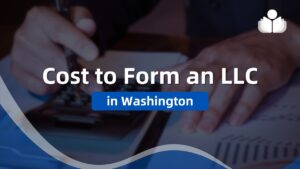Guidelines to Form an Advisory Group
© Copyright Carter McNamara, MBA, PhD, Authenticity Consulting, LLC.
Sections Include the Following
- Overall Purpose and Benefit of an Advisory Group
- What is an Advisory Group?
- When Should an Advisory Group Be Formed?
- How Should an Advisory Group Be Organized/Defined?
Also consider
Related Library Topics
Learn More in the Library’s Blogs Related to Boards and Advisory Groups
In addition to the articles on this current page, see the following blogs which have posts related to Boards and Advisory Groups. Scan down the blog’s page to see various posts. Also see the section “Recent Blog Posts” in the sidebar of the blog or click on “next” near the bottom of a post in the blog.
Overall Benefit of an Advisory Group
Driving forces such as increased global telecommunications, public consciousness and diverse values are causing rapid change among organizations like never before. Consequently, the overall role of board governance becomes very critical in guiding these organizations during rapid change. Thus, an advisory group can be a tremendous complement to the effectiveness of the official, or formal, board of directors as it works to carry out a specific, complex, major role (eg, financial analysis) or initiative (eg, construct a building).
What is an Advisory Group?
An advisory group is a collection of individuals who bring unique knowledge and skills which complement the knowledge and skills of the formal board members in order to more effectively govern the organization.
Advisory groups are sometimes used, too, to provide membership which gives status to people, for example, retired CEOs, board chairs or major contributors.
The advisory group does not have formal authority to govern the organization, that is, the advisory cannot issue directives which must be followed. Rather, the advisory group serves to make recommendations and/or provide key information and materials to the formal board of directors.
The advisory group can be standing (or ongoing) or ad hoc (one-time) in nature.
When Should an Advisory Group Be Formed?
Consider establishing an advisory group when it’s apparent that a major, current issue/challenge or complex program/product/service is too complex and/or numerous to be handled by the formal board of directors.
It’s best if the advisory group is formed to address a need that is usually outside the usual, ongoing roles and responsibilities of a formal board. (See Typical Types of Committees.) Otherwise, it may be more prudent to more fully equip and develop the formal board of directors.
How Should the Advisory Group Be Defined/Organized?
For ongoing, major activities (for example, that will last longer than a year) establish a standing advisory group. For short-term activities (for example, one to nine months), establish an ad hoc advisory group.
Carefully define the role of the advisory group in the formal board of directors’ by-laws.
In the by-laws, specify the advisory group’s purpose, duration, guidelines for membership, how it contributes knowledge and skills, and any structures/policies from which the advisory group interacts with the formal board of directors and organization members.
Advisory group, like formal boards of directors, should have a chair who drives organization and development of the advisory group. The advisory group chair should be the point of contact between the advisory group and the formal board of directors.
See the Free Complete Toolkit for Boards
For the Category of Boards of Directors:
To round out your knowledge of this Library topic, you may want to review some related topics, available from the link below. Each of the related topics includes free, online resources.
Also, scan the Recommended Books listed below. They have been selected for their relevance and highly practical nature.
 Sections of this topic
Sections of this topic

















